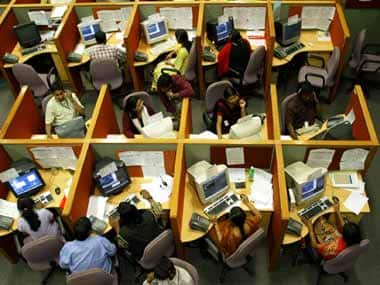By Ejaz Ghani
What will India look like in 2025?
The optimistic outlook is that India, which accounts for 80 percent of the South Asian regional economic output, is headed towards double digit growth rates . South Asia too will grow rapidly, primarily due to India.
The pessimistic outlook is that, given the huge transformational challenges facing the region, growth should not be taken for granted.
Which of these two outlooks is likely to prevail? This is what this story is all about. It is about the future - what is coming, and how to get that right.
There is strong empirical justification in favour of the optimistic outlook. Growth will be propelled higher by young demographics, improved governance, rising middle class and the next wave of globalisation. There is democracy, for the first time since independence, in all countries in the region. Young demographics will result in nearly 20 million more people joining the labour force, every year, for the next two decades.
Almost a billion people will join the ranks of the middle class. India’s middle class is well-educated, enterprising, innovative, more demanding of better services, products and governance.
The region will benefit from a new wave of globalisation in services, and increased international migration and human mobility. Indeed the drivers of growth seem to have already moved from the rich world to the poor world. The room for catch-up is huge, given the big gap in average income between South Asia and the rich countries.
[caption id=“attachment_144492” align=“alignleft” width=“380” caption=". Formal-sector job growth has been strongest in regions and industries that have exhibited high rates of entrepreneurship and dynamic economies. Reuters"]
 [/caption]
[/caption]
Impact Shorts
More ShortsThe empirical arguments for the pessimistic outlook are equally strong. The link between demographics and growth is not automatic. Indeed, a demographic dividend, in the absence of right policies to enable people to be healthy, well-educated and well-trained in the skills demanded, could morph into a demographic disaster.
Neither does globalisation automatically engender growth. Countries need the physical infrastructure - ports, roads, electricity, water and communications - and peace and security to help ensure wider access to markets and exposure to opportunities.
Increased market integration needs to be complemented with appropriate structural reforms to enable land, labour and capital to be reallocated from low-productivity traditional sectors into high-productivity modern sectors. A structural transformation at such a mammoth scale will not be easy.
The truth will probably lie somewhere in between. The optimistic outlook that South Asia will achieve double-digit growth rates may be too optimistic. The pessimistic outlook that growth will be derailed by corruption , dilapidated infrastructure, large informal sector traps and dismal social conditions may be too pessimistic.
What can be done? South Asia needs a bridge to the future. Policymakers should better manage the three key drivers of transformation - growth, inclusiveness and risk. South Asia has the largest concentration of poor people on earth. So the pace of growth needs to be accelerated to create jobs and reduce poverty.
Rapid growth cannot be achieved without more entrepreneurs. India and other South Asian countries have too few entrepreneurs for their stage of development. While South Asia has a disproportionately high rate of self-employment and many small firms, this has not as readily translated into as many young entrepreneurial firms that create jobs and increase productivity as could be hoped.
Yet there is no question that entrepreneurship works in the region. Formal-sector job growth has been strongest in regions and industries that have exhibited high rates of entrepreneurship and dynamic economies. Reducing conflict is a prerequisite to political stability, which, in turn, is the prerequisite for implementing pro-growth policies. Even in a best-case scenario, the presence of low-level conflict constrains the policies governments can implement to promote growth.
Growth without inclusiveness will be difficult to sustain in the future. After decades of being primarily a region of farmers, South Asia is rapidly urbanising , as millions leave their stagnant villages, and move to the cities. However, urban infrastructure is decaying, and unable to serve the existing population, let alone be prepared for increased rural-urban migration. Modernisation has been partial, with a large part of the economy operating in rural and informal sectors, and only a small segment of the population thriving in the globally-integrated modern sectors. Growth that results in partial modernisation will continue to undermine the ability to move people out of poverty, and to share the fruits of growth more widely.
Growth is not an end in itself. Policy makers should not think of growth separately from inclusion and vulnerability. Increased income disparities should not be viewed as the price to pay for high growth. Neither should gender inclusion, education and health be considered as second-stage reforms. A development response that aims to promote growth first, and then deal with human misery, is not sustainable. Policies to promote social development should be designed in a manner that the growth process itself is not hampered. The region needs policies to raise growth wherever it happens. It also needs policies to redistribute the gains of growth more efficiently and effectively.
Time is of the essence. South Asia is fast reaching the tipping point. There is only a short window of opportunity. Policymakers need to redouble their efforts to promote rapid, inclusive and stable growth.
Ejaz Ghani is Economic Adviser at the South Asia Poverty Reduction and Economic Management, The World Bank, Washington, DC and is editor of a new book Reshaping Tomorrow (Oxford University Press). Republished with permission from East Asia Forum .
)